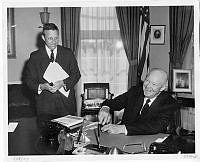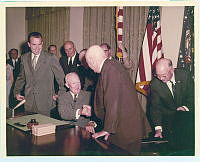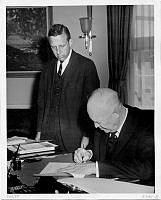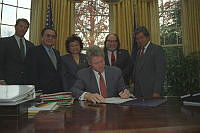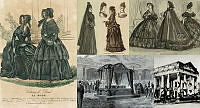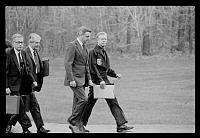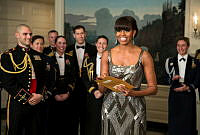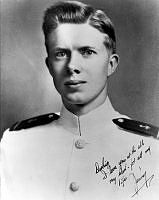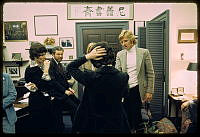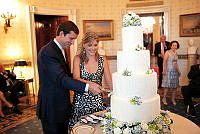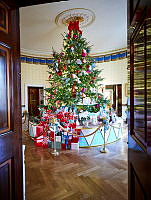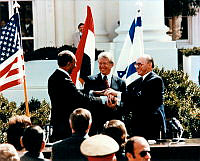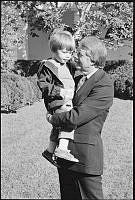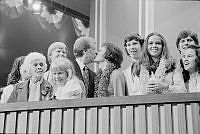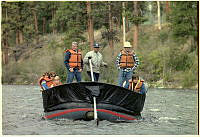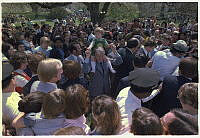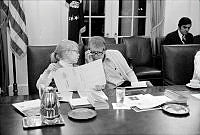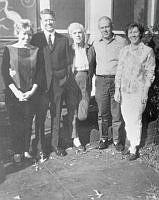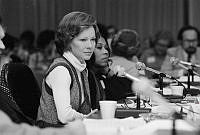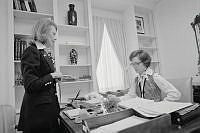Rubenstein Center Scholarship
Presidents' Day at the White House

During the 19th century, balls were held in celebration of this presidential holiday. This invitation to “Washington’s birth night ball” was addressed to President Andrew Jackson.
Library of CongressJust how does the president celebrate Presidents’ Day? Throughout the more than 200-year history of the White House, presidents themselves have taken time to celebrate the American presidency. Originating as a public celebration of our first president, George Washington, this holiday’s commemoration has taken various forms over the years. As time passed, additional presidents, most notably Abraham Lincoln, have also been celebrated on their birthdays. Although local observances of the February birthdays of Washington and Lincoln—February 22nd and February 12th respectively—as well as well as other presidential birthdays throughout the year still occur, the current federal holiday, established in 1971, is celebrated on the third Monday in February (thus inclusive of both Washington and Lincoln’s birthdays) and is officially known as Washington’s Birthday, but better known as Presidents’ Day.
Below are several historic examples showing how birthday celebrations of Presidents Washington and Lincoln have been celebrated both in the White House, and throughout Washington, D.C.

During the administration of President Andrew Jackson, a large wheel of cheese was delivered as a gift to the president. Jackson opened the White House on Washington’s Birthday in 1837 for a reception where the cheese was served.
Perley's ReminiscencesDuring a February 22nd White House reception in honor of Washington’s Birthday in 1837, President Andrew Jackson opened the White House to the public for a reception featuring a giant 1,400 pound cheese, a gift from Col. Thomas Meacham, a Sandy Creek, New York dairy farmer. Nine days earlier, a writer for the Alexandria Gazette recorded the growing excitement over the public reception, informing readers, “The house of the President, it is understood, will be thrown open to the public on Wednesday, the 22nd instant, being the anniversary of the birthday of Washington . . . I believe it is intended on this occasion to cut the Mammoth Cheese which has been for some years lying ready for the visit of the taster.”1 One participant in this public White House gathering, well-known author and editor Nathaniel Parker Willis, recalled of the 22nd, “I joined the crowd on the twenty-second of February to pay my respects to the President and see the cheese . . . the White House, was thronged with citizens.” Once most of the crowd left, Willis sat down and sampled a piece of cheese sent over from President Jackson, and found it to be “of excellent quality.”2

Richard France, Captain of the Washington Light Infantry, c. 1841. In 1839, the Washington Light Infantry, as well as additional Washington City military organizations, paraded from the White House to the Navy Yard in celebration of the 107th birthday of President George Washington.
Library of CongressIn 1839, the city began its celebration of Washington’s Birthday with a militia parade from the White House, to the Capitol, and finally to the Navy Yard. Military units such as the Washington Light Infantry, the Washington City Guards, and the Georgetown Invincibles impressed audiences with their drill and natty uniforms. President Martin Van Buren and other officials met later that day at the Masonic Temple where, as customary, a reading of President Washington’s Farewell Address was delivered. The day’s celebrations culminated in a ball, attended by President Van Buren himself at Carusi’s Saloon, a premier early Washington, D.C. event venue, where entertainment was provided by the United States Marine Band.3
On February 19, 1862, President Lincoln issued a proclamation encouraging Americans to gather on February 22 and commemorate President Washington’s Birthday by reading his 1796 Farewell Address. During the Civil War, President Washington’s legacy was evoked by both Northern and Southern leaders to inspire citizens and soldiers alike.4
On February 21, 1914, children of the Peace Club and Neighborhood House of Washington, D.C., performed a play entitled “Ladies of the White House” which included costumes reproducing first ladies’ dresses based on those worn in their official White House portraits, showing how public celebration of this holiday could incorporate not only presidents, but also the role of first ladies.5

In 1931, President Herbert Hoover addressed the country on the anniversary of Lincoln’s birthday via the radio, demonstrating the improved ability of the president to reach ever increasing audiences during national celebrations.
Library of CongressPresident Herbert Hoover addressed the nation on February 12, 1931 via the relatively new medium of radio on Lincoln’s birthday. Transmitted by the National Broadcasting Company and the Columbia Broadcasting System, President Hoover declared, speaking from his office in the White House, “By the magic of radio I am able to address several hundred public gatherings called this evening throughout our country in celebration of the birth of Abraham Lincoln… is invisible presence dominates these halls, ever recalling that infinite patience and that indomitable will which fought and won the fight for those firmer foundations and greater strength to government by the people. From these windows he looked out upon that great granite shaft which was then in construction to mark the country's eternal tribute to the courage and uncompromising strength of the founder of this Union of States.”6

President Lyndon B. Johnson held a Lincoln Day luncheon at the White House on February 12, 1965. After lunch in the State Dining Room, First Lady Lady Bird Johnson accompanied guests upstairs for a tour of the Lincoln Bedroom.
White House Historical AssociationOn February 12, 1965, President Lyndon Baines Johnson held a luncheon event at the White House in commemoration of President Lincoln’s birthday. Guests included well-known historians such as Bruce Catton, Major General Ulysses S. Grant III, and other notables. Before the lunch, President Johnson received the Gold Medal of the U.S. Civil War Centennial Commission, presented to him in the East Room.7
These White House and Washington, D.C. examples demonstrate that celebrations of the holiday best known as “Presidents’ Day” have varied in form and substance. Still called various names and celebrated slightly differently around the country, this holiday shows both change and continuity in how America celebrates the office of the presidency.














